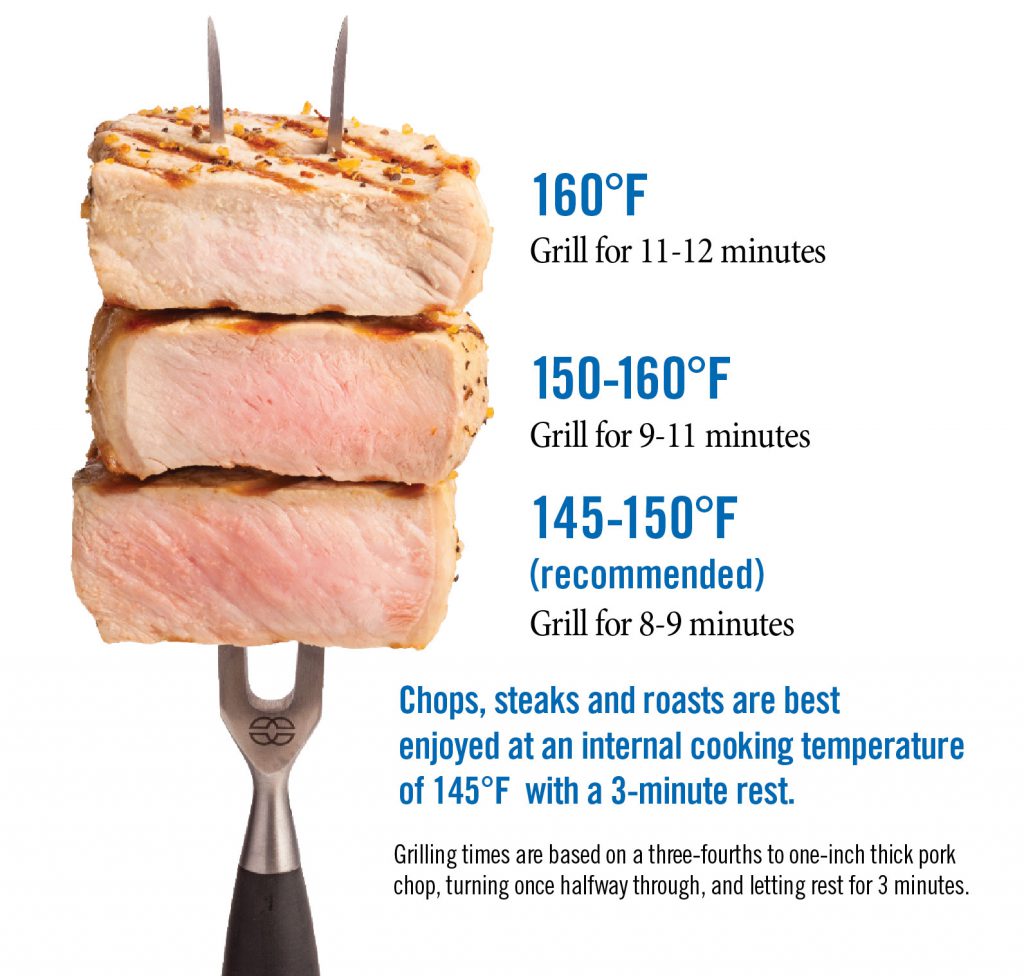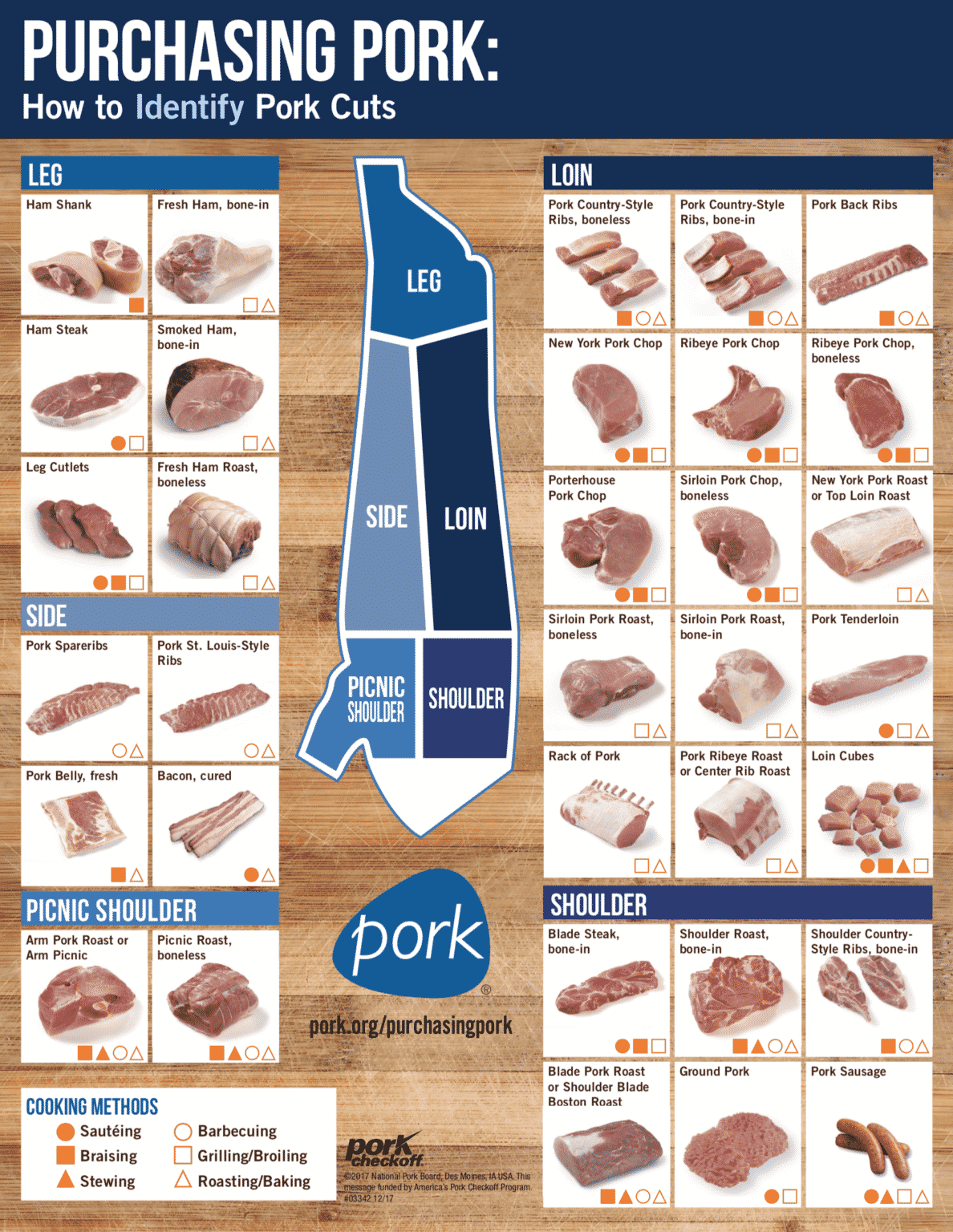Cooking pork chops to perfection requires a keen understanding of the ideal internal temperature, which is crucial for flavor, texture, and food safety. Whether you're hosting a dinner party or preparing a quick weeknight meal, achieving the perfect doneness is key. In this comprehensive guide, we’ll explore the ideal cooking temperatures for pork chops, various cooking methods, and tips to ensure your pork chops are both safe and delicious. This guide is designed for cooks of all skill levels, from beginners to seasoned professionals, and will help you elevate your culinary expertise.
In today's culinary landscape, precision in cooking meat has become increasingly important, driven by growing food safety awareness and the popularity of techniques like sous vide. This article delves into the specifics of cooking pork chops to the perfect temperature, offering practical advice and insights. We'll also examine the different types of pork chops, the best cooking methods, and how to accurately determine when they're done. With this knowledge, you'll never serve an undercooked or overcooked chop again.
Whether you're cooking for a special occasion or a casual evening at home, this guide will equip you with everything you need to know about cooking pork chops. From ideal internal temperatures to seasoning techniques and cooking methods, we've got you covered. Let's dive in and discover how to create mouthwatering pork chops every time!
Read also:Exploring The Life Of Andrew Wilsons Wife Nnogo Obiamiwe
Table of Contents
- Exploring the World of Pork Chops
- The Perfect Temperature for Pork Chops
- Delicious Ways to Cook Pork Chops
- Essential Safety Tips for Pork Preparation
- How to Determine Doneness
- Maximizing Flavor with Seasoning and Marination
- Avoiding Common Cooking Pitfalls
- Wrapping It Up
Exploring the World of Pork Chops
Pork chops are a versatile and beloved cut of meat, sourced from the loin of the pig. Their taste and texture can vary significantly depending on the specific cut. Below, we'll explore the primary types of pork chops and what makes each unique:
- Rib Chop: These chops, cut from the rib section, are known for their tenderness and rich flavor. The bone adds extra depth and juiciness.
- Center Cut Chop: Also referred to as loin chops, these cuts are lean and mild in flavor, making them perfect for quick cooking methods.
- Loin Chop: A thicker cut that can be either bone-in or boneless, loin chops are ideal for grilling or pan-searing due to their hearty texture.
- Shoulder Chop: Known for their bold flavor, shoulder chops are slightly tougher and benefit from longer cooking times to achieve tenderness.
The Perfect Temperature for Pork Chops
According to the USDA, pork chops should be cooked to an internal temperature of 145°F (63°C), followed by a three-minute rest. This ensures the pork is both safe to eat and retains its juiciness and tenderness. Below is a breakdown of the ideal temperatures based on your desired level of doneness:
- Medium-Rare: 145°F (63°C)
- Medium: 160°F (71°C)
- Well-Done: 170°F (77°C)
Cooking pork chops to the correct temperature not only enhances their flavor but also eliminates harmful bacteria, ensuring a safe and enjoyable dining experience.
Delicious Ways to Cook Pork Chops
There are numerous ways to prepare pork chops, each offering distinct flavors and textures. Below are some popular methods:
Grilling
Grilling pork chops on medium-high heat provides a smoky flavor and attractive grill marks. To achieve the best results, preheat your grill and lightly oil the grates to prevent sticking. This method is ideal for imparting a savory, charred exterior while keeping the inside juicy.
Pan-Seering
Pan-searing in a hot skillet creates a delightful crust on the outside while maintaining a tender and juicy interior. For added flavor, use a combination of oil and butter during the cooking process. This method is quick and efficient, making it perfect for busy weeknights.
Read also:Exploring Pauley Perrette The Iconic Actress Beyond Abby Sciuto
Baking
Baking pork chops in the oven is a hands-off approach that ensures even cooking. To retain moisture, cover the chops with foil during the initial stages of cooking and remove it toward the end to allow browning. This method is excellent for achieving consistent results without constant monitoring.
Slow Cooking
Using a slow cooker is an excellent way to prepare incredibly tender pork chops, especially for those with limited time. Simply add your favorite seasonings or sauces and let the slow cooker do the work. This method is perfect for creating a flavorful and tender dish with minimal effort.
Essential Safety Tips for Pork Preparation
Food safety is a top priority when handling and cooking pork. Follow these essential tips to ensure your meal is safe to eat:
- Always use a digital meat thermometer to verify the internal temperature of the pork chops.
- Wash your hands, utensils, and all surfaces thoroughly after handling raw pork to prevent contamination.
- Keep raw pork separate from ready-to-eat foods to avoid cross-contamination.
- Refrigerate leftover cooked pork within two hours of cooking to maintain freshness and safety.
How to Determine Doneness
To ensure your pork chops are cooked to perfection, consider the following methods:
- Meat Thermometer: Insert a digital meat thermometer into the thickest part of the chop, avoiding contact with the bone, to check the internal temperature.
- Visual Inspection: Cut into the chop and look for clear juices and a light pink center, which indicates proper doneness.
- Touch Test: Gently press the chop; a firm texture suggests it's done, while a soft texture means it requires additional cooking time.
Maximizing Flavor with Seasoning and Marination
Enhancing the flavor of your pork chops is simple with the right seasoning and marination techniques. Consider the following tips:
- Simple Seasoning: A combination of salt, pepper, garlic powder, and paprika can create a flavorful crust that complements the natural taste of the pork.
- Marinades: Incorporate acidic ingredients such as vinegar or citrus juice into your marinades to tenderize the meat and infuse it with additional flavor.
- Brining: Soaking the pork chops in a saltwater solution helps retain moisture and enhances their overall taste, resulting in juicier chops.
Avoiding Common Cooking Pitfalls
Avoiding common mistakes can make a significant difference in the quality of your pork chops. Below are some errors to watch out for:
- Overcooking the chops, which can lead to dryness and a lack of flavor.
- Not allowing the meat to rest before slicing, which causes the juices to escape and results in a less tender chop.
- Skipping the use of a meat thermometer, which is essential for ensuring proper doneness.
Wrapping It Up
In conclusion, mastering the ideal temperature for cooking pork chops is essential for creating a safe and delicious meal. Aim for an internal temperature of 145°F (63°C) followed by a resting period to achieve optimal juiciness and flavor. Experiment with various cooking methods, seasonings, and marinades to find your ideal combination. Always prioritize food safety and be mindful of common cooking mistakes to ensure consistent success in the kitchen. Now it's time to put this knowledge into practice and elevate your pork chop game!
If you found this guide helpful, please leave a comment below, share it with your friends, or explore our other articles on cooking tips and techniques. Happy cooking!
Thank you for reading! We hope to see you back on our site for more culinary inspiration and guidance.


